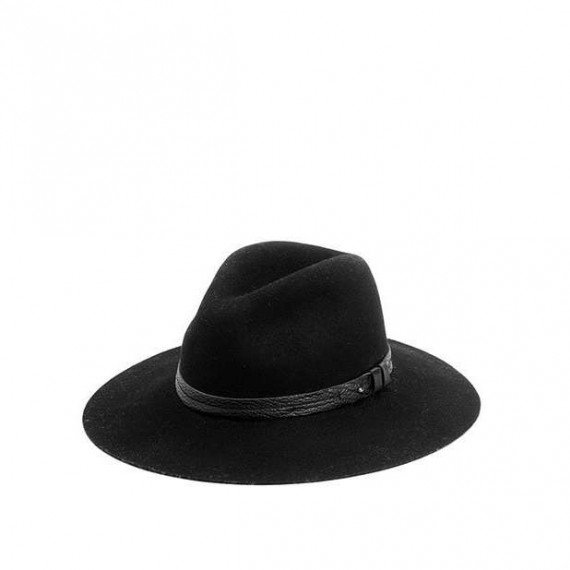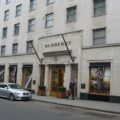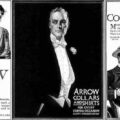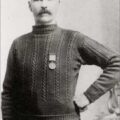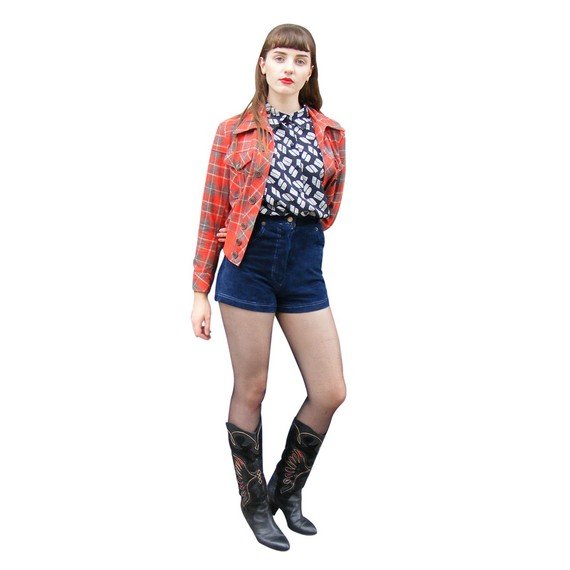The wonder of 1970s film fashion
June 24, 2017The late 1960s and the 1970s were a new period for Hollywood cinema. Following the French New Wave of the 1960s, some people called it the American New Wave – or simply New Hollywood. The glamour factor of all of this was maintained by some seriously sharp outfits, particularly for the male actors. 1970s film fashion was an exciting time.
This was the period of directors, and not studios, calling the shots and putting their own indelible signature on films. Stanley Kubrick, George Lucas, Roman Polanski, Ridley Scott and Steven Spielberg started out in this period and gleefully released their visions, which were rarely pretty. This was not safe, family friendly fare any more but films full of sex, violence and callous shocks.
Movies about the 70s era
The 1970s was when “Blaxploitation” films burst into the mainstream. They were both celebrated and criticised, because it was great to see African-American actors carrying a film, but it was also felt that the storylines featuring ultra violent masculinity didn’t do black stereotypes any favours. However, early hits like Shaft (1971) and Sweet Sweetback’s Baadasssss Song (1971) heralded a huge movement of films starring black actors dishing out vigilante justice in extremely memorable outfits.
Cleopatra Jones (1973) and Foxy Brown (1974) were a popular variation where it was the women, instead of the men, executing the ultra-violence.
1970s film fashion – the flamboyance of it all
Both the flamboyant male and female clothing of key Blaxpolitation films influenced fashion at the time and has often been revived in 70s styles since. On the release of Shaft, thousands of wide lapelled leather coats were rushed out by manufacturers, and suits, watches, belts and cologne were labelled (officially or not) as Shaft merchandise.
Pam Grier’s outfits as the eponymous Foxy Brown were created by Ruthie West, who also made stage costumes for pop stars like The Jacksons, Bobby Gentry and The Temptations. Her costumes were, like the best 70s pop stars’, dazzling and revealing. But as well as this, some of the designs were political, in particular a scene where Foxy wears a black leather jacket and black trousers coupled with a high round Afro.
The Afro was activist and academic Angela Davis’s iconic hairstyle, (and to underline the point she is seen in a poster behind Foxy’s head) and the leather alluded to the Black Panthers, an activist group who had their own uniform of black leather jackets, black trousers or skirts and a black beret. The use of the Afro in the film meant that many more women started wearing their hair that way, which largely de-politicised its intent and made it into more of a 1970s film fashion .
Hats and Furs
Tamara Dobson, who was a former fashion model, starred as CIA agent Cleopatra Jones in 1973. Giorgio di Sant’ Angelo designed her costumes. He was already a fashion designer with an amazing background – the Italian/Argentinian had studied architecture at university, then ceramics, then had an internship with Picasso, and sent an animation to Walt Disney who loved it and gave him a job in Hollywood.
He felt lost in LA so he quit after only fifteen days, moved to New York, worked as a textile artist and in interior design, and started making Lucite jewellery which was bought by the editor of Vogue, Diana Vreeland. She featured it in the magazine. Like many others, Vreeland recognised his innovative eye, and employed him as a stylist. He was responsible for some of the most iconic images of the 1960s, such as Twiggy’s daisy-painted eye and Veruska cocooned in fur in the desert. Di Sant’ Angelo opened his own ready to wear boutique in 1966, and also made selected couture pieces, so he had a fantastic creative background to draw on when approached to do the costumes for Cleopatra Jones.
Off screen as well as on
In classic Hollywood style di Sant’ Angelo dressed Dobson off screen as well as on, and who wouldn’t grab the chance when such an eclectically luxurious wardrobe was on offer? Cleopatra Jones and Tamara Dobson both wore boxy fur jackets, billowing blouses, hoop earring and an array of brilliant and unexpected hats which strengthened the link with 1970s film fashion .
Gucci’s 2011 AW collection was visibly inspired by the film and its sequel, Cleopatra Jones and the Casino of Gold (1975). And as well as having one of the best names in film history, Grace Wales Bonner specifically credited Sweet Sweetback’s Baadasssss Song as a reference point for her SS15 collection.
Precise Tailoring
More well dressed violence came in the form of The Godfather Part One and Two (1972 and 1974). “The most brutal and moving chronicles of American life ever designed” according to a contemporary review in the New York Times concerned another minority group – Italian Americans – showing their bloody side as Mafia boss Don Corleone hands over his empire to a reluctant son.
The director Francis Ford-Coppola, whose family is from Southern Italy, had reservations when handed the script. He didn’t want to encourage people’s associations of Italian Americans with violence and The Mob – but he went ahead anyway and The Godfather has probably done the most in cementing their reputations in this regard.
For the film, Anna Hill Johnstone designed a series of ever sharper suits for Michael Corleone (Al Pacino), showing his rise to power and his increasing confidence in his role. Starting with innocuous, slightly ill fitted brown and light coloured suits he progresses to those pin sharp black three piece suits by the end of the first movie.
The movie was set in the 1940s and 50s and Johnstone added a homburg hat as was customary for men at that time. The homburg immediately became a style statement for well dressed men influenced by 1970s film fashion .
1970s film fashion – Disco fashion
Now for something a bit lighter – you would think. Saturday Night Fever (1977) has two versions – a PG one which is all high jinks and mild peril and one I didn’t know about – the original one which featured gang rape, expletives, nudity and a fight sequence. But even the milder version talks about gang violence, abortion and racial tension.
The film stars John Travolta as Tony Manero, who lives with his parents and works in a dead end job but every weekend is king of the dance floor. The film was a smash hit for several reasons – its serious moments balanced the pure joy of the dancing scenes, its disco soundtrack including the title track by the BeeGees was an instant hit, and Tony Manero spent all his money on clothes.
Iconic suits
That three piece white suit of the poster is iconic, but that’s not all there is to the costume design. Patrizia Von Brandenstein, the costume designer, stuck closely to actual disco styles when she gave Tony his outfits, and he is partial to the bum hugging, wide legged polyester trousers called Angel’s Flight pants.
Tony also favours tight shirts with wide lapels, and his colour choices are always bold. He wears a red shirt with black leather jacket and black trousers on his entrance, later switching to pink trousers with a pink print shirt and red leather jacket, and at different point sports purple and blue shirts too before the big dance competition with the white suit and black shirt.
The silhouette is always the same. The costumes were all purchased and not made – Tony’s collars really would have been that wide, it’s no exaggeration. All his outfits (and the rest of the gang, who match him) really capture a certain disco style, and that white suit has been the outfit of choice of the best-dressed fancy dress 1970s film fashion party attendees ever since.
1970s film fashion – Vintage Style
More white suits, this time in The Great Gatsby (1974). Ralph Lauren, already an established designer having launched his first menswear line in 1968, designed the male costumes for this. Robert Redford looks perfect in his 1970s versions of what should have been 1920s fashion, with the long line, shoulder pads and slightly nipped waist. It’s not authentic, but that suit, which comes in pink and grey too, looks so perfect that every man at the time must have wanted to be a jazz age dilettante like Jay Gatsby.
Theoni V Aldredge designed the clothes for the women in the film, and won an Oscar for her work. The sequinned cloches and romantic floppy hats of Daisy Buchanan (played by Mia Farrow) only intensified the 70s fervour for original vintage finds from the period.
1970s film fashion – Masculine tailoring
Another film designed by Ralph Lauren was Annie Hall (1977). Diane Keaton in the eponymous role looked great in her oversized and slightly rumpled looking mens jackets, waistcoats, shirts and ties, worn with a big felt hat. Crucially, her hair was long and feminine (though also disheveled). The character was very likeable and her wardrobe adopted by the chic.
1970s film fashion – Fashion and Murder
Less likeable was Faye Dunaway as fashion photographer Laura Mars in The Eyes of Laura Mars (1978). Coldly stylish herself, she has a taste for slick and stylised violence in her imagery; those images are echoed in brutal premonitions of murders amongst her circle.
The film is a fashion extravaganza with “Laura’s” photographs actually created by Helmut Newton and Rebecca Blake, and celebrated real life models Lisa Taylor and Darlanne Fluegel playing the models in the film. Theoni V Aldredge designed the costumes for the fashion shoots, which perfectly imitate the clothes coming down the catwalk at the time, while Bernadene C Mann costumed Faye Dunaway herself.
There were lots of tie ins with the film with window displays in department stores and photography and modelling competitions encouraging creatives to reproduce the look. The film is often used as a touchstone for the era when people are researching 1970s film fashion .
Feminism and the robot
Another film which is obviously popped on the laptop when any designer thinks of doing the 70s is The Stepford Wives (1975). Designed by Anna Hill Johnstone it is a satire drawing heavily on Betty Friedan’s feminist book The Feminine Mystique (1963) which pointed out that American housewives were not in quite the state of domestic bliss as they were generally pictured.
In the film, a group of suburban men systematically murder their wives and replace them with robot versions. The women wear the most 70s clothes imaginable – flared jeans, hot pants, dungarees and cropped blouses in the beginning and by the end of the film, as compliant robots, they are in matching floral maxi dresses, demure in their length but with some astounding, husband pleasing cleavage on display. 1970s film fashion at its best!
1970s film fashion – Bitter tears
The Bitter Tears of Petra von Kant (1972) is more glamorous and quirky. It tells the story of an arrogant and cruel fashion designer (Margit Carstensen) who lives with her assistant Marlene (Irm Hermann) but falls in love with Karin (Hanna Schygulla), who come into her life wanting to be a model. The film making is deliberately stagy and the acting style blank, but the outfits are stagier still. Carstensen and her co-stars are wigged like shop mannequins and wear stylised outfits – emerald green, buttercup yellow and violent violet alongside fur collars as fake as the shag pile rug.
Headscarves and cardis
Grey Gardens (1975) is perhaps even weirder. The film, which has always divided opinion, nevertheless spawned so many collections by devotees including John Galliano that the “Grey Gardens look” is starting to become a cliche. It’s a documentary, following raddled aristocrats Little Edie (Edith Bouvier Beale) and her mother, Big Edie (Edith Ewing Bouvier Beale) in their lives in their sprawling and dilapidated New York mansion, Grey Gardens.
Filmed in a fly-on-the-wall style without voice-overs and in natural light, the film makers Albert and David Maysles aimed to let the pair tell their own stories. The criticism levelled at the film include two main strands – one is that this unusual style of film making is ineffective and boring. The other is that the family is mentally ill, and it is cruel to expose them in this way. However, others are absolutely fascinated by it and maintain that the pair are vastly original and know exactly what they are doing.
Whichever way, the style of Little Edie in particular is influential. In the film she wears an ever-changing variety of outfits, including roll necks over swimsuits with a cardigan worn as a skirt or cape, and always a silk scarf completely covering her head topped by an extravagant brooch.
1970s film fashion – Happy Hippies
And, on a totally different note, if you want a reflection of what actual hippies wore in the 1970s, it was captured right at the end of the decade by the anti-war film Hair (1979). Ethnic influences, flares, ripped denim, patches and appliqués, velvet smoking jackets and of course, long, wild hair are all there in this highly watchable and moving musical.
Read more about Fashions in the 1970s
Shaft
Cleopatra Jones
The Godfather
Saturday Night Fever
The Great Gatsby
Romantic hats in the Great Gatsby
Annie Hall
The Eyes of Laura Mars
The Stepford Wives go shopping
The Bitter Tears of Petra von Kant
Grey Gardens
Hair the Musical





